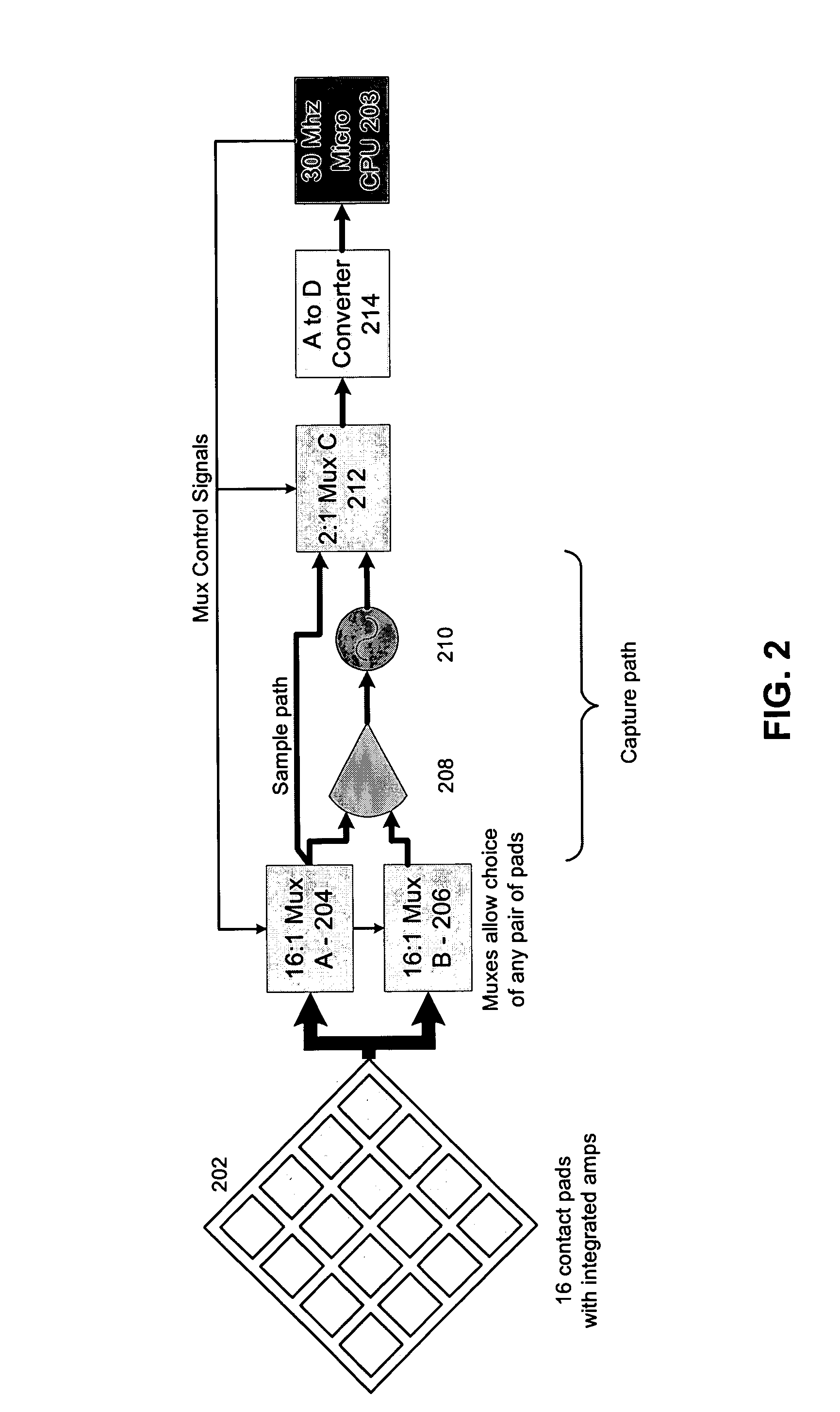System and method for detecting and analyzing electrocardiological signals of a laboratory animal
a laboratory animal and electrocardiological technology, applied in the field of methods and systems for noninvasive detection of electrocardiological signals of laboratory animals, can solve the problems of disguising drug effects on behavior, high invasiveness, mouse movements, etc., and achieve the effect of reducing electrode pain, rapid boosting of electrode signal levels, and accurate and non-invasive detection
- Summary
- Abstract
- Description
- Claims
- Application Information
AI Technical Summary
Benefits of technology
Problems solved by technology
Method used
Image
Examples
Embodiment Construction
It is understood that some embodiments of the present invention (or elements thereof) may be carried out using computing systems and devices (servers, personal computers, mainframes, minicomputers, super computers and the like, networked and stand-alones), as well as their associated peripheral devices, and other devices with which such computer devices communicate. To that end, such computing devices generally include one or more processors for operating software (operating or otherwise), which thus may be used for carrying out one or more methods of the present invention. Moreover, such computer devices include RAM and ROM memory, hard drives, CD burners, flash memory, printers, input devices (e.g. keyboard, mouse, trackpad, microphone), sound devices (e.g. sound card, loudspeakers), networking devices (e.g., Ethernet) and the like.
Embodiments of the present invention may be used alone or in combination with a variety of laboratory devices for performing a variety of experiment...
PUM
 Login to View More
Login to View More Abstract
Description
Claims
Application Information
 Login to View More
Login to View More - R&D
- Intellectual Property
- Life Sciences
- Materials
- Tech Scout
- Unparalleled Data Quality
- Higher Quality Content
- 60% Fewer Hallucinations
Browse by: Latest US Patents, China's latest patents, Technical Efficacy Thesaurus, Application Domain, Technology Topic, Popular Technical Reports.
© 2025 PatSnap. All rights reserved.Legal|Privacy policy|Modern Slavery Act Transparency Statement|Sitemap|About US| Contact US: help@patsnap.com



